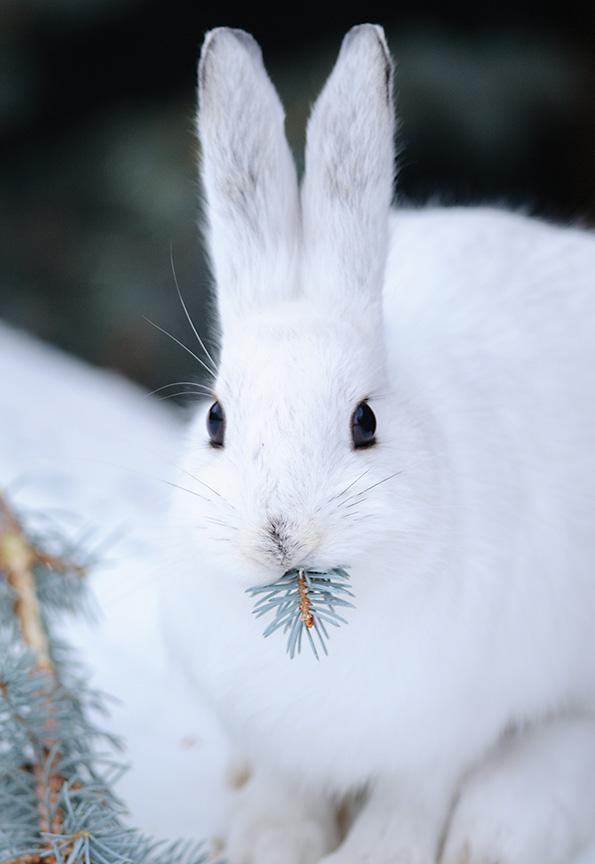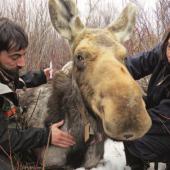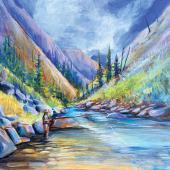Following the White Rabbit
Montana's hue-changing hare.
Sprinting at more than 20 miles per hour, a snowshoe hare bursts into a meadow at Yellowstone’s northeast entrance, flushed by a pair of coyotes. The hare changes direction several times, and finally bolts down a gully at the meadow’s far end. There is one glaring problem with the escape effort, however: the animal’s fur is bright white, and the landscape on this early November day is a snowless expanse of light-brown grasses.
The snowshoe reached cover, but its remarkable speed and agility wouldn’t keep it safe for long. Unlike adult hares, juveniles tend to freeze in place to avoid attracting a predator’s attention—but, like running away, the behavior doesn’t work if the animal is white in a snowless environment. Even at night, moonlight illuminates the light-colored hare and its trademark black-tipped ears and super-sized hind feet.
Wildlife experts call this a color “mismatch,” a condition that can have deadly consequences, and not just for the hare. Montana’s lynx population, for example, depends on a supply of snowshoe hare, its favorite meal. A lynx may temporarily benefit from mismatch hares because they’re easier to hunt, but as the hare population plummets, the lynx suffers from lack of prey.
Montana’s snowshoes change color twice a year, an evolutionary adaptation to avoid detection by numerous predators (in addition to lynx and coyote, fox, other mammals, and even predatory birds hunt hares). Each fall, the hare begins a five-to-six week transition from brown to white, or more accurately, from brown to tri-color—white fur on the outside, gray closest to the body, and brown in the middle.
Snowshoe hares change color regardless of the amount of snow on the ground. The changes are related to the length of the day’s light cycle; hares have receptors that register the varying amounts of light and dark over the seasons. According to wildlife biologists, this sleekly furred mammal can’t slow down or speed up its transition to winter white based on how much snow has fallen. Researchers have duplicated the dependence of the hare’s fur color on seasonal light with experiments indoors. When the animal receives less light, hormone production is stimulated and the white, or pigment-less coat grows. Lengthening the cycle brings on the springtime phase of brown fur. Biologists point out that snowshoe hares in permanently cold and snowy habitats stay white year-round, and hares in locations with long light periods—Oregon and Washington—stay brown year-round.
Although hare populations fluctuate cyclically about once a decade—possibly because of disease—climate change is believed to be the greatest threat to these animals and the creatures that eat them. Current studies show that there will be an increasing number of snowless days in snowshoe hare habitats, and that color mismatch will cause a decline in hare numbers. The species is remarkably prolific; in Montana, it has the ability to produce up to three litters of about eight young each year. They’re also widespread—snowshoes live across the northern United States and Canada. Yet biologists believe that some areas are already experiencing a climate-related decrease in hare populations.
In southwest Montana, look for hares throughout coniferous forests, especially in second-growth and mixed stands of fir, pine, and spruce. During warm weather months, you can tell a hare from a rabbit by its long, high hind legs and somewhat bigger size. During cold weather months, it’s easy to see the difference. Because rabbits don’t change color, if the animal you spot is white or transitioning from brown to white, or white to brown, it’s a hare.













